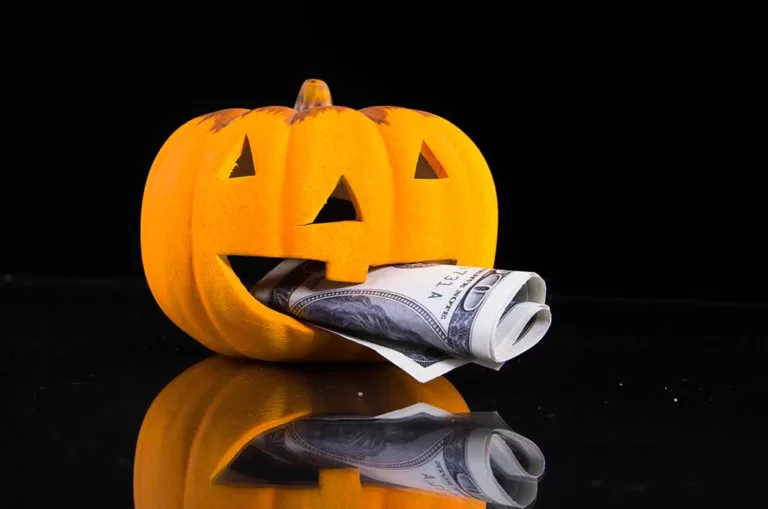Inflation is not just a fancy word economists throw around; it’s something that affects the money in our pockets, the cost of our daily bread, and how businesses operate.
Let’s break it down, keep it chill, and understand what’s really going on.
What Is Inflation And How Is It Measured?
Alright, imagine you’ve got $10 in your pocket today. If there’s inflation, it’s like a quiet thief stealing a bit of that money’s superpower.
So, a year from now, your $10 might not buy the same goodies it does today.
Want to know how much this sneaky thief is taking? We use something called the inflation rate, usually expressed as a percentage.
If prices are 2% higher this year than last year, that’s the inflation rate – a kind of money detective work.
Now, here’s where it gets interesting. Economists peek into the prices of all sorts of things people commonly buy – groceries, clothes, rent, you name it.
They compare those prices over time to see if they’re playing nice or mischievously going up. It’s like keeping tabs on the town’s price vibes.
So, inflation isn’t just a fancy term; it’s like a plot twist in your money’s adventure.
Ready to explore more or have any questions?
Pro Tip: These indices offer insights into inflation trends and can help you anticipate potential impacts on your finances or investments.
Best Survey Sites To Make Money During Inflation
Types Of Price Indexes
There are a couple of ways to keep tabs on those sneaky price changes.
Here are some of the main types of price indexes:-
1. Consumer Price Index (CPI)
This index tracks the prices of everyday things people commonly buy – groceries, clothes, rent, etc.
It gives us a snapshot of how the average cost of this basket changes over time, signaling if inflation is at play.
2. Producer Price Index (PPI)
Instead of focusing on what you buy, the PPI looks at what producers charge for their goods and services.
Rising producer prices can be a sign that you might see those increases at the checkout counter.
3. Wholesale Price Index (WPI)
This index delves into the prices at the wholesale level, revealing what businesses pay for goods before they reach the consumer.
It’s like catching a sneak peek into the early stages of the price game.
4. GDP Deflator
Taking a broader view, the GDP deflator compares the current prices of all goods and services produced in a country to prices in a base year.
It helps us understand how inflation influences the overall economy.
These indexes are like different lenses, each providing a unique perspective on the dynamic world of prices.
Anything specific you want to explore further or have questions about?
Pro Tip: Inflation can erode the real value of money over time. Consider diversifying your investment portfolio by including assets that historically act as hedges against inflation.
When Has Inflation Occurred In The Past?
In the annals of economic history, inflation has often been a rollercoaster ride with various peaks and troughs. One notable episode unfolded during the tumultuous 1970s.
The era was marked by a significant spike in oil prices, triggered by geopolitical events and oil-producing nations flexing their economic muscle.
This sudden surge in energy costs sent shockwaves through economies worldwide, causing a ripple effect on various sectors.
As a consequence, prices soared, leaving individuals bewildered by the rapid erosion of their purchasing power.
Another instance of inflationary turbulence occurred in the aftermath of World War I.
The period between 1914 and 1920 witnessed a dramatic uptick in prices, driven in part by the war-induced economic disruptions and the subsequent post-war adjustments.
Hyperinflation, notably in Germany, reached staggering levels, rendering the German mark nearly worthless.
This economic turmoil had profound social and political implications, contributing to the challenges faced by the Weimar Republic.
More recently, the early 21st century saw a global economic downturn that spurred concerns about deflation.
However, central banks around the world responded with unprecedented monetary stimulus measures.
While these actions helped avert a deflationary spiral, they also raised fears of inflation down the line, as excess money in the system could lead to rising prices.
The delicate balance between stimulating economic recovery and managing inflation remains a challenge for policymakers in navigating the complexities of the modern economic landscape.
For Example: During the hyperinflation in Zimbabwe in the late 2000s, prices skyrocketed, and the country experienced an economic crisis. At its peak, the inflation rate reached astronomical levels, illustrating the severe consequences of uncontrolled inflation.
Related Blog: How To Save Money During Inflation?
What Causes Inflation?
Inflation is a complex economic phenomenon influenced by various factors.
One key driver is increased demand for goods and services, which can outpace the economy’s ability to supply them.
This heightened demand often leads to rising prices. Additionally, disruptions in the supply chain, such as shortages of raw materials or logistical challenges, can contribute to price increases.
Changes in production costs also play a role. If the cost of inputs like labor, energy, or materials rises, businesses may pass those costs onto consumers through higher prices.
Moreover, monetary policy decisions, like central banks increasing the money supply, can contribute to inflation by potentially devaluing the currency.
It’s worth noting that inflation is often a combination of these factors, and economists analyze a range of indicators to understand its root causes in a specific economic context.
1. Demand Pull Effect
Imagine everyone suddenly wanting the same pair of sneakers.
The demand goes through the roof, and so do the prices. That’s the demand pull effect – too many folks wanting the same things.
For Example: Imagine a limited edition sneaker drops, and suddenly everyone wants a pair. The surge in demand creates a frenzy, leading to higher prices as people compete to snag this trendy footwear.
2. Cost Push Effect
Now, flip it. If the cost of making those sneakers shoots up, say because of a hike in raw material prices or labor costs, the cost push effect kicks in.
Producers push those extra costs onto consumers, and voilà – prices surge.
For Example: Picture this: A sudden spike in oil prices globally increased transportation costs. As a result, businesses face higher operational expenses, and to cover these, they raise prices on various goods and services.
3. Built-in Inflation
This one’s like a self-fulfilling prophecy. When workers demand higher wages, businesses often raise prices to cover those costs.
But then, workers demand even higher wages because prices went up. It’s a bit of a loop that keeps inflation rolling.
Pro Tip: Allocate resources wisely, prioritize essential expenses, and be prepared to adjust spending habits based on changing economic conditions.
How Does Inflation Affect Business And Consumers?
Businesses and consumers aren’t just bystanders in the inflation show – they’re part of the plot.
For Businesses
Imagine running a pizza joint. If flour prices shoot up, you might need to charge a bit more for your pizzas to keep the dough rolling.
This can lead to a tricky dance – balancing costs and customer satisfaction.
For Consumers
On the other side, as prices rise, your hard-earned cash might not stretch as far.
What used to be a pizza-and-movie night might turn into a slice-and-stream evening.
For Example: Consider a small tech startup facing increased costs for essential components. To maintain profitability, they might decide to pass on some of these costs to consumers, leading to higher prices for their innovative products.
Related Blog: How To Invest During Inflation?
Advantages And Disadvantages Of Inflation
Advantages
1. Encourages Spending
A bit of inflation can be like a nudge to spend. If prices are going up, you might be more likely to grab that new gadget now rather than later.
2. Debt Erosion
If you owe money, a bit of inflation can be your buddy. Your debts might feel a bit lighter in real terms.
Disadvantages
1. Purchasing Power Drop
As prices rise, what your money can buy decreases. Your purchasing power takes a hit.
2. Uncertainty
Too much inflation can create economic uncertainty. Businesses might hesitate to invest, and consumers might pull back on spending.
For Example: During the 2008 financial crisis, many economies experienced deflationary pressures, prompting central banks worldwide to implement expansionary monetary policies to ward off deflation and stimulate economic growth. This action, while averting deflation, raised concerns about potential future inflation.
Related Blog: How To Make Money During Inflation?
What Are Some Options For Addressing Inflation?
When inflation gets a bit too wild, there are a few tools in the economic toolbox:-
1. Monetary Policy
Central banks, like the Federal Reserve, can tweak interest rates to cool things down.
Higher interest rates can make borrowing more expensive, slowing down spending.
2. Fiscal Policy
Governments can also step in. They might adjust taxes or government spending to rein in inflation.
For Example: In the 1980s, the U.S. Federal Reserve, under Chairman Paul Volcker, implemented a tight monetary policy to combat double-digit inflation. This involved raising interest rates significantly to bring inflation under control.
Related Blog: How To Budget For Inflation: 14 Best Ways!
How To Control Inflation?
Getting inflation under control is like taming a wild beast. Central banks and governments work together, using a mix of tools to keep the beast from going on a rampage.
1. Interest Rates
Central banks often play with interest rates. If inflation is heating up, they might raise interest rates to cool down spending.
Higher interest rates can make borrowing more expensive, slowing the economy.
2. Government Spending
Governments can also put a leash on inflation by adjusting their spending.
If things are getting too hot, they might cut back on projects or increase taxes to pull some money out of the economy.
Pro Tip: Recognize the impact of inflation on debts. While moderate inflation may reduce the real burden of fixed-rate debts over time, high inflation can lead to increased interest rates.
Is Inflation Good Or Bad?
Well, it’s a bit of both.
The Good
1. Encourages Spending
A touch of inflation can be like a gentle push to spend. When prices are expected to rise, people might be more willing to part with their cash.
2. Debt Relief
If you’ve got loans, inflation can be your silent helper. As prices go up, the real value of your debt goes down.
The Bad
1. Purchasing Power Drop
The downside is pretty clear – your money doesn’t go as far. What used to be a grocery bag full of goodies might now feel a bit emptier.
2. Uncertainty
Too much inflation can throw a wrench into long-term planning. Businesses might hesitate to invest, not knowing where prices will be next year.
Pro Tip: Changes in interest rates, tax policies, or government spending can influence inflation dynamics. Understanding these policy shifts enables you to adapt your financial strategy accordingly and navigate potential economic challenges.
Conclusion
So, what’s the verdict on inflation? It’s like seasoning in your financial stew – a little adds flavor, but too much can ruin the pot.
A sprinkle of inflation can encourage spending and make debts more bearable.
However, if it gets out of hand, your money’s purchasing power takes a hit, and the economic kitchen might get a bit too spicy.
Understanding the dance of inflation involves knowing the players – CPI, PPI, PCE, GDP – and how they groove together.
Types of price indexes and historical inflation adventures give us context.
The causes – demand pull, cost push, and built-in inflation – show us how the dance begins.
And when you throw in the formula for measuring inflation, the impact on businesses and consumers, the pros and cons, and the tools to keep it in check, you’ve got the complete dance card.
It’s a financial waltz where central banks and governments play choreographers, trying to balance the rhythm of inflation for a stable and groovy economy.
FAQs
The Consumer Price Index (CPI) tracks the prices of everyday goods like groceries and rent, offering a snapshot of how the average cost of a basket of goods changes over time. It serves as a key indicator for inflation, helping us understand how purchasing power may be affected.
Inflation can lead to a drop in purchasing power, meaning your money may not stretch as far. To mitigate its effects, consider diversifying your investment portfolio, prioritizing essential expenses, and adjusting spending habits based on changing economic conditions.
Inflation is influenced by increased demand, supply chain disruptions, changes in production costs, and monetary policy decisions. Factors like demand pull (increased consumer demand), cost push (rising production costs), and built-in inflation (wage-price spirals) contribute to the overall inflationary environment.
Yes, historical examples include the hyperinflation in Germany after World War I and the inflation crisis in Zimbabwe in the late 2000s. Severe inflation can lead to economic crises, eroding the real value of money and causing challenges for businesses and individuals.
Central banks can adjust interest rates, and governments can implement fiscal policies like changing taxes or government spending to control inflation. These measures aim to strike a balance in the economy, ensuring that inflation remains at a manageable level without hindering economic growth.








